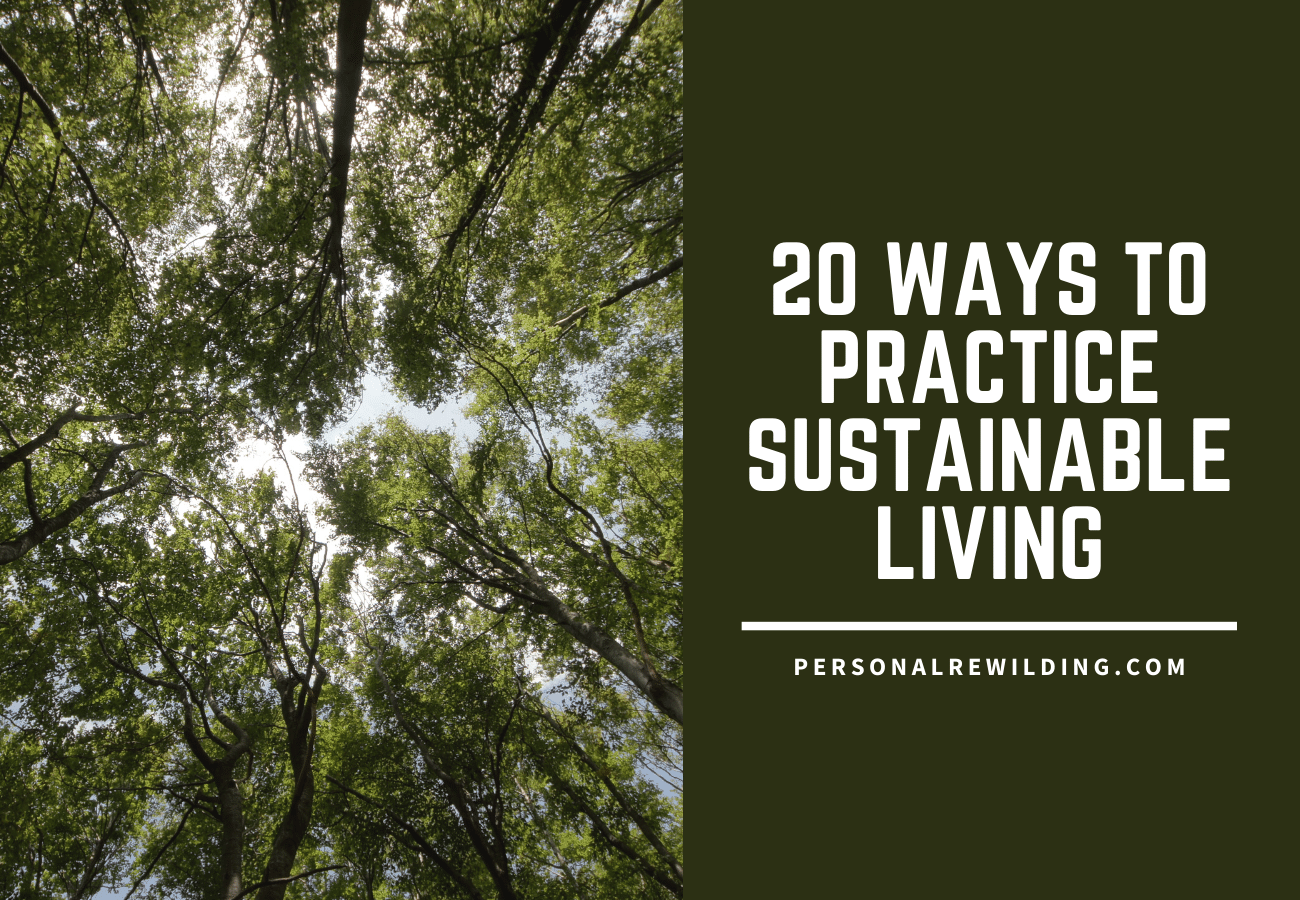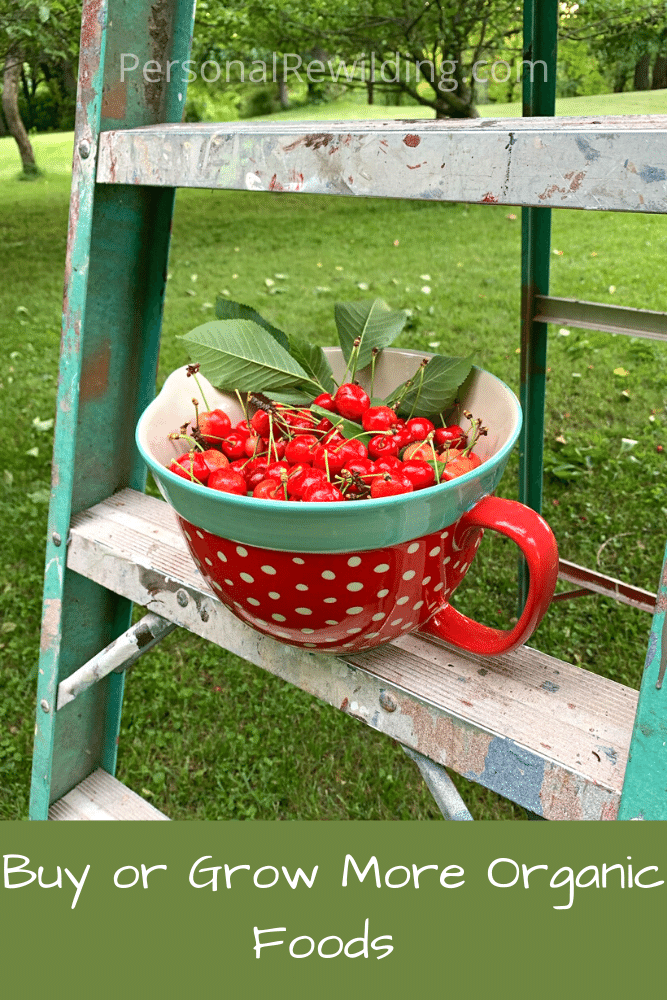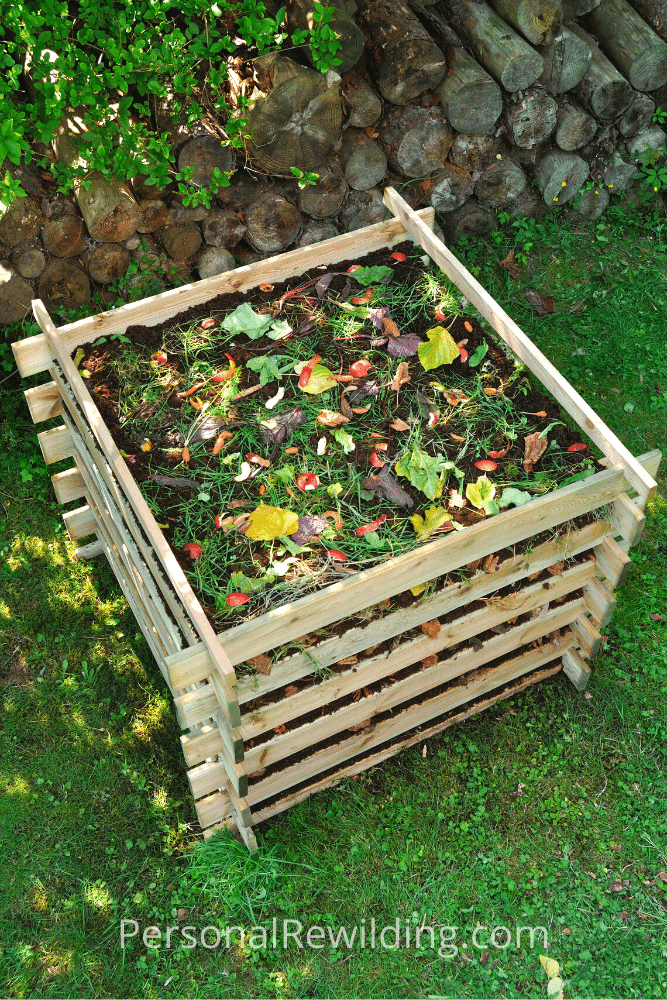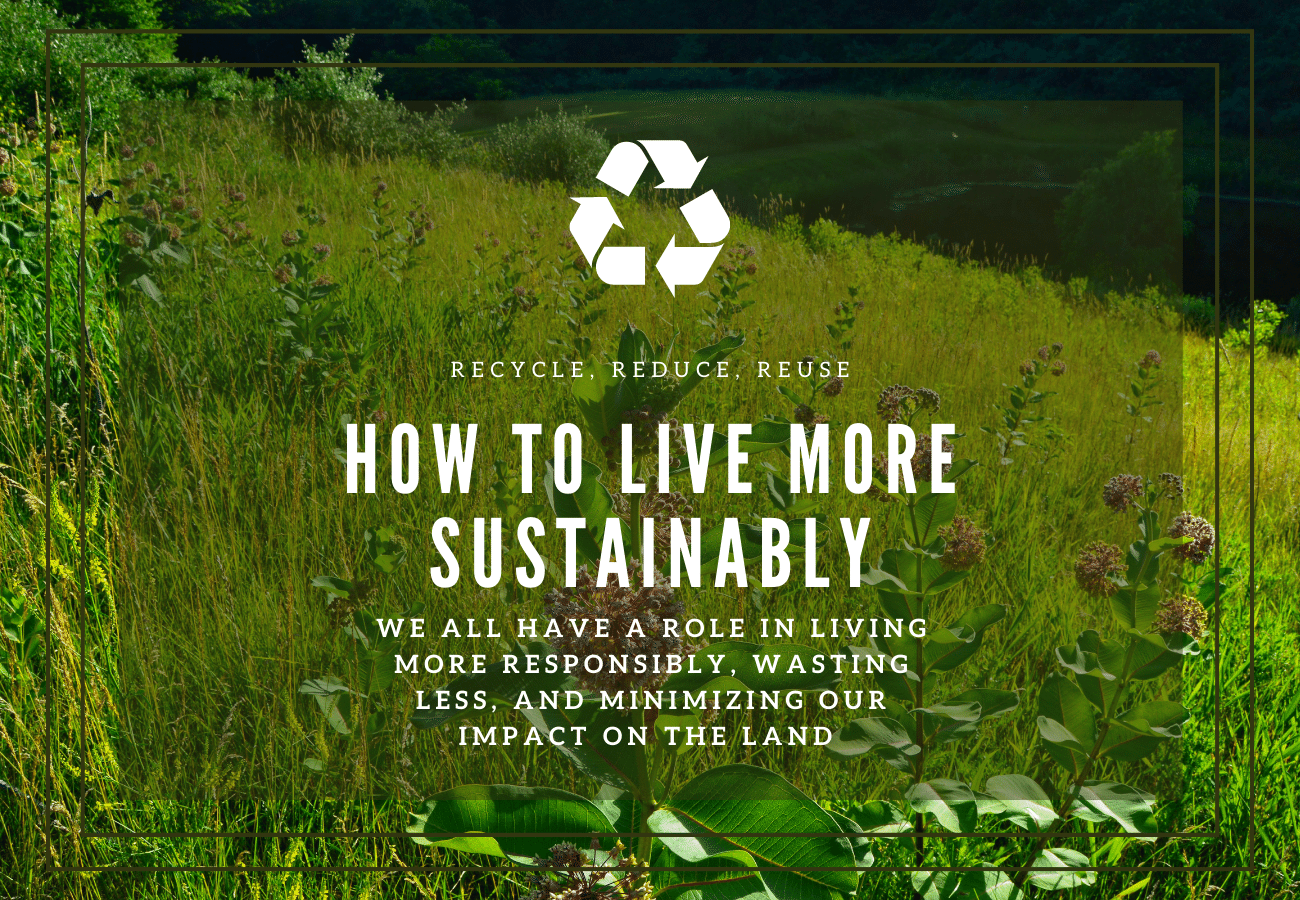- Home
- Sustainability
20 Sustainable Living Ideas
The vast majority of us want to practice sustainable living. We care about the Earth and the environment, but we’re unsure first how we are negatively impacting the planet and secondly how to make the necessary changes to become better environmental stewards.
What is meant by “sustainable living”? Living sustainably simply means that we can meet our needs while not impairing the ability of the Earth to provide for future generations. It means living intentionally, understanding our impact, and making simple decisions in our daily lives.
The scale of the problem seems overwhelming, but all we can do is make changes in what we can control. Starting with small, sustainable changes is absolutely the right thing.
It does not mean that we must become minimalists or vegans. It means considering some of the behaviors we currently give little thought to and finding ways to mitigate or improve those behaviors.
Not all of these sustainable living ideas will be applicable to everyone, but there are tips here that anyone can follow to lessen their negative impact on the environment.
Here are 20 simple sustainable living ideas and how to implement them:
#1. Understand Your Carbon Footprint
Knowing your carbon footprint is the first step toward understanding your personal impact on climate change, as well as the key pieces of your lifestyle and behaviors that contribute. Personal change always starts with knowledge! Mossy Earth has a great online carbon footprint calculator if you want to learn more about your personal footprint.
#2. Recycle!
This sustainable living idea seems like a no-brainer, but so much of what we use and dispose of could be recycled and few people take full advantage of it. Most plastics, metals, paper & cardboard, glass, and electronics are accepted by recyclers. Different recyclers have different rules regarding what is accepted and how they must be sorted. Be sure to look up and follow the rules of your local recycling agency.
#3. Use reusable containers instead of disposable
We use so many single-use containers in our disposable society. One-time use to carry a sandwich or hold some water and then off to the landfill. Everything from water bottles to zipped sandwich baggies to plastic wrap to plastic coffee pods. You would be shocked how much waste can be eliminated from your daily life by utilizing reusable containers – refillable water bottles, washable plastic containers for food transport, real silverware and plates instead of single-use disposable.
#4. Compost your organic waste
A significant portion of our daily waste is organic waste. Vegetable peelings, coffee grounds, fruit cores, tea bags, breadcrumbs, eggshells, and yard waste can all be composted, creating rich fertile humus for your lawn, garden, or landscaping and keeping this material out of landfills.
#5. Grow your own food, even small amounts in containers
Growing your own food is both a sustainable living idea and richly rewarding. There is something much tastier and more satisfying about a vegetable or herb from your own garden. The scale of your food-growing activities are determined by your personal situation – space, time, and inclination – but even something as simple as herbs grown in containers on a windowsill or porch are baby steps towards more sustainable living.
#6. Buy more locally sourced food
The food we eat has an oversized carbon footprint. Foods are often trucked great distances, sometimes internationally, to grocery store chains where they are purchased by consumers. Whenever possible buy locally sourced foods from local grocers or farmer’s markets, avoiding the long transport and high carbon cost of transported goods.
#7. Buy or grow more organic foods
Most of the food we buy is intensively farmed. This means it is produced with mostly GMO crops, heavily doused with artificial fertilizers, pesticides, and herbicides. The human health risk of these intensive farming practices aside, it has an enormous impact on the environment, causing mass die-offs of keystone and pollinating insects and creating a ripple effect throughout the entire ecosystem. Organic foods are produced using natural fertilization and without pesticides, creating healthier soils and more biodiverse ecosystems.
#8. Walk and bike more
While it may not be practical for everyone, I see opportunities every day for people to walk or bike to work, the gym, or to the store. Cars are one of the largest creators of greenhouse gasses, and we’ve become reliant on them for even short-distance travel. Aside from that, they’re expensive to operate, while walking and biking provide valuable physical exercise.
#9. Simplify your life
Find ways to simplify your life by decluttering, minimizing your possessions, unplugging from technology, and reducing your obligations. Learn more in our 10 Tips to Simply Your Life article.
#10. Eat less meat and more veggies
Meat-based diets require many times more energy and water than plant-based diets. That’s because one gram of meat protein requires 11x the energy of one gram of plant protein. It also uses 100x as much water. Add to the fact that domestic cattle are massive emitters of methane, a potent greenhouse gas, and you find that reducing your meat intake even one day a week will reduce your carbon footprint.
#11. Buy less and use the stuff you use longer
We tend to buy a lot of cheap and disposable goods, much of which we don’t even need. Our lives are full of clutter and temporary buyer’s highs. Evaluate your buying habits and simply buy less; reduce some of the clutter in your life. When you do purchase things, buy quality items. Quality clothing, electronics, furniture, and other hardware often lasts many times longer, reducing your carbon footprint and reducing landfill waste or e-waste.
#12. Be energy conscious
Sustainable living is being conscious of your daily energy usage. This not only reduces your carbon footprint, it also saves you money. Get a programmable thermostat and use it! Set your home to more energy-efficient temperatures when you’re away from home or asleep. Set your thermostat lower and bundle up in the winter. Or turn your AC up a few degrees and utilize fans to help circulate the air.
#13. Supplement with renewable and clean energy sources
Clean energy sources are getting more affordable and available to the standard homeowner. Home-sized wind turbines or solar panels that mount on your roof or lawn can power your home and even feed power back into the grid, earning you money. The federal government and many US states offer rebates, financing, and grants for renewable energy projects.
#14. Avoid individually packaged goods, buy in bulk
Many of our foods, snacks, toiletries, and other goods are offered in individual, disposable packaging, from water bottles to yogurts to coffee pods and everything in between. These individually packaged goods, while sometimes convenient, are incredibly wasteful. Plastic in the trash from a single cup of coffee, a single cup of water, a single serving of guacamole or peanut butter. Tons and tons of non-biodegradable waste accumulated every day. Reduce that waste by buying in larger bulk containers, and transferring single-serving amounts to reusable containers for the same convenience.
#15. Explore "work from home" possibilities
Work from home gained popularity during the Covid pandemic. Many workplaces accommodated during the stay-at-home period of the pandemic, and some maintained some work from home flexibility after the lockdown was over. Find out if your workplace offers “work from home” options, even once or twice a week. Besides saving the energy of a commute, it will save you money on fuel and vehicle maintenance.
#16. Buy more second-hand goods
Reducing your consumption is key to practicing sustainable living. One great way to reduce our consumption is to purchase more second hand or used goods. There are many thrift stores and secondhand shops selling used or vintage clothing, furniture, electronics, books, and kitchen appliances, amongst others. This not only avoids the energy of producing and shipping a new good, but eliminates the waste of a discarded good. Great places to look for secondhand items are garage sales, thrift shops, antique malls, charity shops, and online auction sites.
#17. Collect rainwater for outdoor use
Sustainable living is about simply using less of our natural resources for everyday life. Huge amounts of water are used every year for watering lawns, vegetable gardens, flower gardens, landscaping, and containerized plants. Most of this water comes out of the tap. You can sharply reduce your utilization of tap water by collecting and reusing rainwater from downspouts for your outdoor and containerized watering needs.
View our page on collecting rainwater for more details.
#18. Buy from sustainable and eco-friendly companies
When it comes to buying from sustainable companies, a little homework goes a long way. Many global companies are dedicated to sustainable and eco-friendly practices, while others are blind to their environmental deficiencies. Businesses like Patagonia, Avocado Green Mattress, Grove Collaborative, and New Belgium Brewing are companies that make their sustainability and environmental responsibility a key piece of their business’s mission.
#19. Go paperless whenever possible
In today’s digital world, the opportunities for going “paperless” and reducing your paper waste are many. Sign up for direct deposit on paydays and avoid paper checks and check stubs (as well as a visit to the bank). Make your monthly payments – mortgage, vehicle, credit cards, electric & gas, etc… - electronic and automatic. Cancel or opt out of magazines, catalogs, and newspapers that you don’t want or use. And don’t forget to recycle your boxes and junk mail!
#20. Buy more natural products
Many of today’s products are made with synthetic materials, chemicals, and artificial dyes and scents. Not only is the manufacture of these goods harmful, but their use and disposal is often harmful to the environment as well. Look at the ingredients the next time you buy fabric softener or hand soap or a sugary snack. Most of the ingredients are unpronounceable. The same goes for our clothing, which is often composed of polyester and other synthetic fabrics, which not only doesn’t biodegrade, but is an unsustainable material which is a huge source of microplastics. Buy more wool, cotton, and other natural materials, and if you buy synthetic fabrics be sure they consist of recycled materials.






